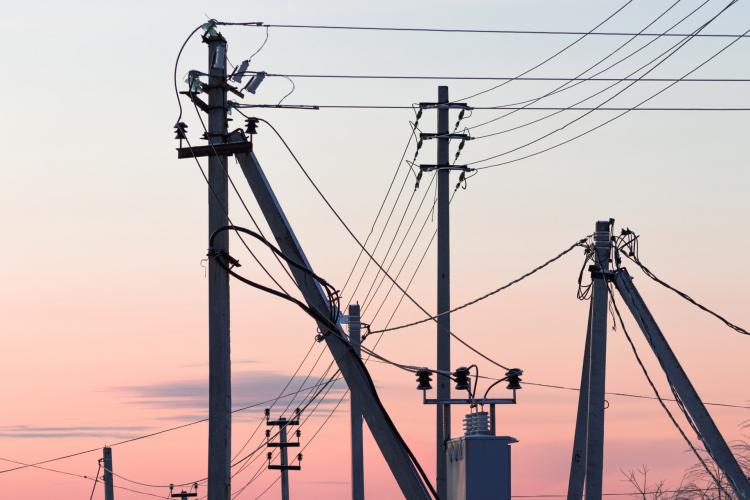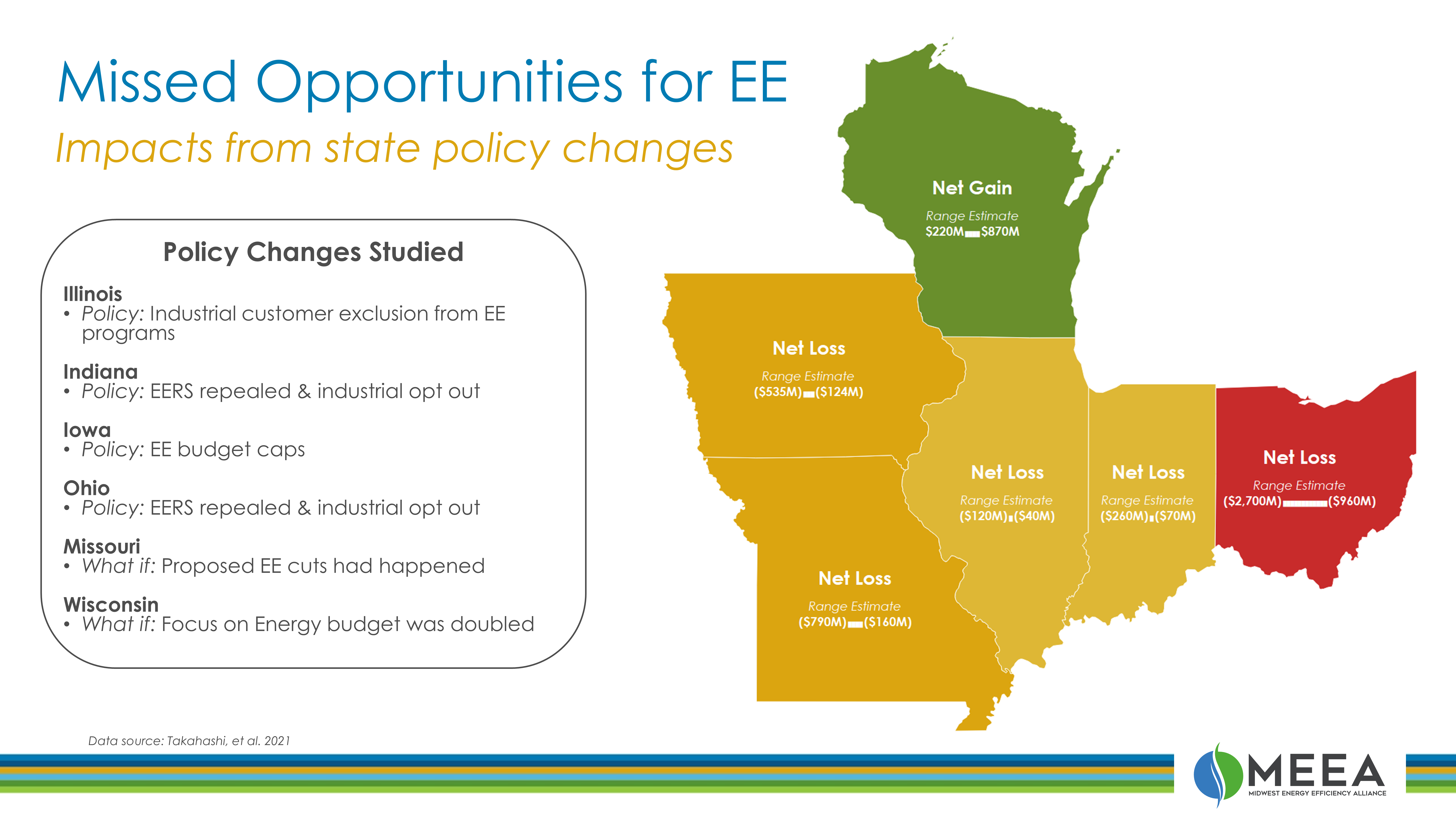
Over the past 15 years, utility-run energy efficiency programming has produced significant energy savings, customer cost savings and a host of system-wide and societal benefits throughout the Midwest. Unfortunately, these benefits are not fully understood or recognized by many state legislators and other policymakers. As a result, MEEA and other energy efficiency industry experts must recurringly defend EE policies from those who misunderstand how efficiency is funded, its value and impact for utility customers and its widespread benefits within individual states and throughout the region. Over the last few years, there have been a number of Midwestern states passing policies that reduce and impede energy efficiency programs which then act against their own interest, leading to increased costs and emissions. In addition, these new policies undermine the state energy system's potential reliability and resiliency and decreases affordability.
MEEA commissioned Synapse Energy Economics to study the broader consequences from policies that constrain energy efficiency programs. The study, which Synapse has also recently blogged about, analyzed regressive policies that have been adopted in four states and proposed plans that were introduced, but not passed, in two additional states. The shifts in utility EE spending and energy savings provided a basis to estimate the net benefits, emissions, health and macroeconomic impacts, nonparticipant value of EE and implications on affordability.
The study reviewed the following policies:
- Illinois' large customer exemption, which prohibits customers with a peak demand over 10MW from participating in energy efficiency programs
- Indiana's repeal of its energy efficiency resource standard and adoption of a large customer opt-out, which allows customers with a peak demand of 1MW to opt out of the voluntary utility EE that replaced the standard
- Iowa's electric and natural gas EE portfolio spending caps, set at 2% of electric retail revenue and 1.5% of natural gas retail revenue
- Ohio's repeal of its energy efficiency resource standard and large customer opt-outs, which effectively eliminated all utility-run energy efficiency (including voluntary utility EE)
- Hypothetical: If Missouri's PSC had approved a reduced electric energy efficiency portfolio, based on the PSC staff recommendations
-
Hypothetical: If Wisconsin doubled its statewide public benefit fund for energy efficiency/Focus on Energy
High-level results by state
Below are key results highlighted in the report. Please refer to the full document for a more in-depth analysis.
- Illinois' 10MW industrial exemption reduced the potential estimated benefits within the state by $40-$120 million.
- Indiana's EERS repeal and 1MW opt-out reduced the value of EE to the state by $70-$260 million.
- Iowa's caps on the amount utilities can spend on EE programming reduced the value of EE to the state by $84-$370 million (electric programs) and $40-$165 million (natural gas programs).
- Ohio's EEPS repeal and opt-out expansion reduced the value of EE to the state by $960 million to $2.7 billion.
- If Missouri Commissioners had followed the advice of the staff recommendation, the value of EE to the state would have been reduced by $160-$790 million. Luckily, the EE portfolios approved by the Commissioners will retain that value for Missourians.
- If Wisconsin were to double the budget for the statewide Focus on Energy EE program and scaled-up program offerings to achieve comparable results to what is being achieved, the state would enjoy $220-$870 million in additional benefits from EE.
The chart shows the net change in benefits from EE programs from the actual or proposed policy. The range of net benefits comes from looking at the utility, total resource and societal perspectives in each state in a standardized analysis. The values reflect a single year's impact over the lifetime of the effected energy savings, and over multiple years, the effects will be compounded leading to substantially greater losses or increased benefits.
In the six targeted states, the report also identified the policy impacts for customers who do not participate in EE programs. Unfortunately, there has been a concern with some state legislators that non-participating customers pay into these programs through bill charges but see no value in return. The Synapse analysis showed that the policy shifts reduced EE's value to nonparticipants as well with reduction to the utility system impacts that benefit all customers, ranging from $14 million (Illinois) to $290 million (Ohio).
What Now?: How you can use this information
The value of reducing energy waste and benefits of right-sizing our energy infrastructure should be a key component of the ongoing debates across the region focused on power sector decarbonization, end-use electrification and economy-wide emissions reductions. It is imperative that we maintain strong commitments to EE to mitigate spiking price and cost fluctuations, maintain reliability, increase affordability and sustain EE as the backbone of the clean energy economy.
This study provides the energy efficiency industry with a guide for explaining the value of EE programs generally and the cautionary results that come from legislative proposals that undervalue and misrepresent EE benefits for consumers and businesses. As the Synapse analysis demonstrates, unnuanced and uninformed legislative changes reduce the ability of utilities to deliver robust EE programs to their customers. Policymakers across the region should be aware of the implications certain policies have on their states' future.
You can access the full report here. MEEA's policy team joined researchers from Synapse for a webinar discussing the study more in-depth on Thursday, November 4, 2021. To find state-specific details, view our set of fact sheets:
- Illinois Overview: Missed Opportunities Report
- Indiana Overview: Missed Opportunities Report
- Iowa Overview: Missed Opportunities Report
- Missouri Overview: Missed Opportunities Report
- Ohio Overview: Missed Opportunities Report
- Wisconsin Overview: Missed Opportunities Report
If you would like to connect with MEEA regarding this study, please contact MEEA Senior Analyst Greg Ehrendreich.